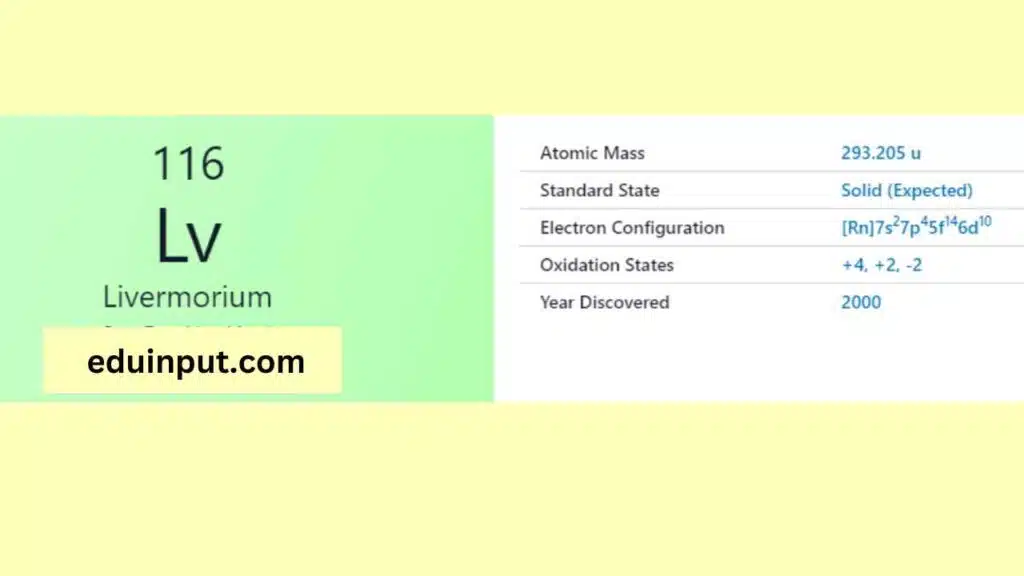Livermorium-Discovery, Properties, And Applications
Livermorium, with a symbol of Lv, is a synthetic element that belongs to the group of heavy metals. It was first synthesized in 2000 by a team of Russian and American scientists at the Joint Institute for Nuclear Research (JINR) in Dubna, Russia, and Lawrence Livermore National Laboratory (LLNL) in California, United States.

| Property | Value |
| Name | Livermorium |
| Symbol | Lv |
| Atomic number | 116 |
| Relative atomic mass (Ar) | (longest lived isotope) |
| Standard state | Presumably a solid at 298 K |
| Appearance | Unknown, probably metallic and silvery white or grey in appearance |
| Classification | Metallic |
| Group in periodic table | 16 |
| Group name | Chalcogen |
| Period in periodic table | 7 |
| Block in periodic table | p |
| Shell structure | 2.8.18.32.32.18.6 |
| CAS Registry | 54100-71-9 |
Discovery
The element was named after Lawrence Livermore National Laboratory (LLNL) located in Livermore, California, United States. It was officially recognized as a new element by the International Union of Pure and Applied Chemistry (IUPAC) in 2012.
Physical Properties
As a synthetic element, livermorium has only been produced in laboratories and has a very short half-life. It is a highly radioactive metal with a silvery-white appearance.
Chemical Properties: Livermorium is expected to belong to group 16 of the periodic table and have properties similar to those of its lighter homologs, such as sulfur, selenium, and tellurium. It is predicted to be a reactive metal and has a high melting and boiling point.
Facts
- Livermorium is a superheavy element and has an atomic number of 116.
- It was the heaviest element ever synthesized when it was first discovered.
- The isotope of livermorium with the longest half-life, Lv-293, has a half-life of about 53 seconds.
- Currently, there are no known applications for livermorium due to its short half-life and rarity.
Applications
Since livermorium is a highly unstable and short-lived element, there are no known practical applications for it. However, studies of livermorium’s chemical and physical properties contribute to a better understanding of the nature of matter and the principles of atomic structure. In addition, research on superheavy elements like livermorium can lead to the discovery of new elements and contribute to our knowledge of the origins of the universe.



Leave a Reply